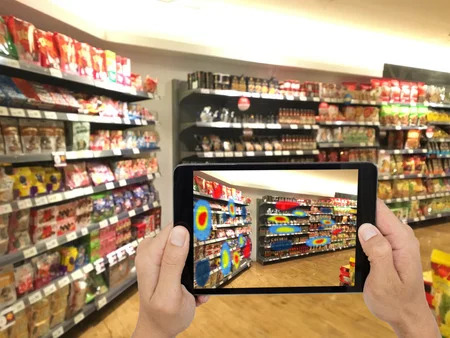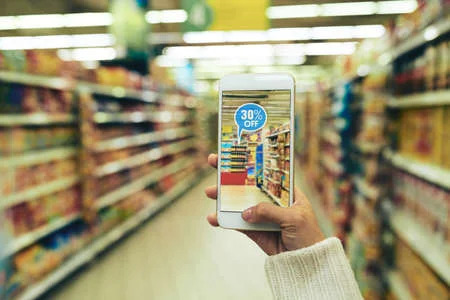What if merchandisers could take a picture of a product display and find recommendations to optimize that display all within a few minutes? One image can identify the number of products on the shelf, their arrangement, and prices, allowing merchandisers to plan placement, optimize the planogram and check for pricing compliance. New image recognition technology for retail merchandising makes it possible to minimize out-of-stock and manage accurate pricing in record time.
The Drawbacks of Traditional Merchandising
The primary job of every merchandiser is to focus on the 4 Ps: product, price, place, and promotion. How well a merchandiser does it may be tracked with before and after photos of product shelves and displays. Time spent by a merchandiser at a retail store depends upon training, procedures, discipline, skills, and experience. The reality is that factors expected to optimize a process can also lead to fluctuating execution, inaccuracies, and inconsistencies. A perfect training session never mirrors the reality a field agent encounters in a retail store. Due to local conditions, the wrong estimation of task times, and manual calculation errors are multiple reasons that can interfere with optimal performance.


A Powerful Visual Approach to Merchandising
Digital technology provides merchandisers with a checklist for their entire day. They need to check stock levels and back-room inventory. Promotional displays featuring limited-time sale prices and promotions must be set up and periodically restocked. Signage may require replacement or repositioning.
The best merchandisers spend time with store management to promote the brand, build sales, and gather intelligence about shopping habits and trends. It’s a lot to accomplish within a limited timeframe. With game-changing visual merchandising technology, any field agent can accelerate the most time-consuming tasks, ensure greater accuracy, and focus their efforts where they will generate the best returns.
A route-to-market solution with advanced image recognition technology can optimize merchandising for higher sales for consumer goods companies. High-speed processing capabilities and best-in-class image recognition system with an expected accuracy of over 95% make this technology highly recommended for the future of retail execution. It enables manufacturers to seamlessly track real-time KPIs while avoiding manual data entry to minimize human errors and ensures greater productivity of field agents at every store.
Take the Guesswork Out of Merchandising
Image Recognition can automatically provide a detailed analysis of product positioning and price for an entire display, eliminating guesswork from merchandising. The technology allows you to minimize out-of-stock, track availability, ensure planogram compliance, and maximize product visibility. It transforms merchandising from reactive to proactive and provides the guidance needed to take action on compliance, pricing, and availability.
- Maintain share of shelf and avoid any gaps with real-time alerts
- Quickly calculate the Share of Shelf, Share of Assortment, and even the Share of Display within a store in a few minutes
- Ensure products are on the shelves at the right place and at the right price
- Launch promotions and campaigns to dominate the category on shelves against competitors
Strengthen Merchandiser Capabilities
With fewer decisions left to chance, a producer gains greater latitude in hiring when every industry grapples with talent shortages. If you have a guided platform for your field reps, they can do a great job without highly developed skills. The new technology can enhance the capabilities of any field agent and maximize the results for every retail visit.
Increase Brand Advocacy to Spur Sales
Retail image recognition technology can also significantly compress the time typically required for a retail store visit. That opens up opportunities for merchandisers to visit more stores and spend more time promoting the brand, leading to higher sales.
Minimize Empty Shelves and Maximize Sales Opportunities
The worst image for any CPG company is an empty shelf, as it can quickly translate into missed sales opportunities. That is especially concerning, given rising inflation and its potential impact on consumer behavior. It may lead to fewer trips to fewer stores but large shopping excursions that translate to more time in the store. When you sell a product that depends upon impulse buys or higher traffic in the store, there is a potential for higher sales, but only if you’ve optimized your 4Ps. With image recognition technology for retail merchandising, you can quickly and easily create the perfect retail display while ensuring greater consistency, accuracy, efficiency, and ultimately, higher sales.
To learn how Ivy Eye retail image recognition technology from Ivy Mobility can transform your merchandising capabilities and contribute to increased product sales, request a demo today.